The Celebration of the Eucharist is the center of the life of the Catholic Church. Offered nearly every day of the year, the Mass is Catholicism’s primary and most important prayer.
Introductory Rites
The Introductory Rites include the opening procession and song, followed by the Penitential Act, in which the congregation makes a general confession of sins, and, on Feasts, Solemnities, and Sundays outside of Advent and Lent, the great hymn of praise, the Gloria. The Introductory Rites conclude with the Collect, or Opening Prayer, which, is typically addressed to God the Father, and often expresses the meaning of the day’s celebration.
Liturgy of the Word
Following the Introductory Rites is the Liturgy of the Word, in which the Church hears and responds to the Word of God. On Sundays and Solemnities, it typically includes a reading from the Old Testament, a psalm response, a reading from the New Testament, and a reading from the Gospel. Next, the priest or deacon preaches a homily, which usually addresses either the readings or the meaning of the particular celebration. After the homily, the congregation recites the Nicene Creed and offers prayer for the Church and the world by means of the Prayer of the Faithful.
Liturgy of the Eucharist
The Liturgy of the Eucharist begins with the Preparation of the Gifts, when the altar is prepared for the Eucharistic prayer and bread and wine are brought forward, and the Prayer Over the Offerings. Next follows the central moment of the Mass, the Eucharistic Prayer. In this great prayer of thanksgiving and consecration, the bread and wine become the Body and Blood of Christ.
Communion Rite
The Communion Rite follows the Eucharistic prayer and begins with the recitation of the Lord’s Prayer. This is followed by the Sign of Peace, the Fraction Rite, and the reception of Holy Communion. Only those Catholics who are properly disposed and have fasted for at least one hour should receive Communion.
Concluding Rite
After the Communion Rite concludes with a brief prayer, the Mass is ended with a blessing and dismissal.
Because of its great importance for the Catholic faith, all Catholics are required to attend Mass on Sundays and select important feast days, known as Holy Days of Obligation.
In the United States, these Holy Days of Obligation include :
- January 1, the Solemnity of Mary, Mother of God
- August 15, the Solemnity of the Assumption of the Blessed Virgin Mary
- November 1, the Solemnity of All Saints
- December 8, the Solemnity of the Immaculate Conception
- December 25, the Solemnity of the Nativity of the Lord






